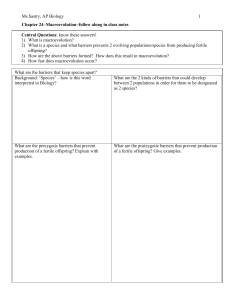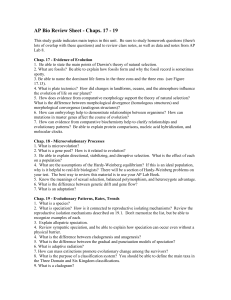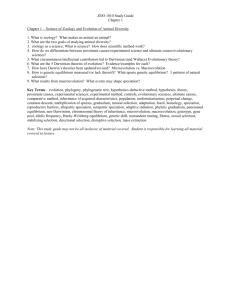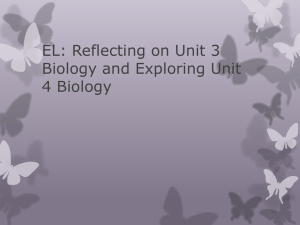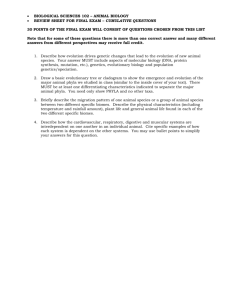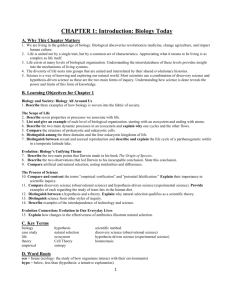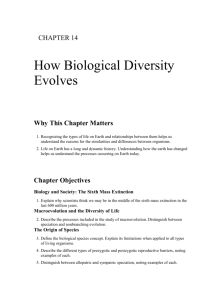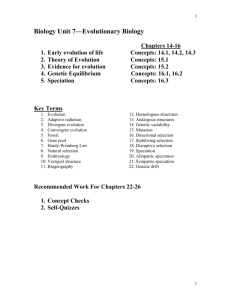Molecules and Cells
advertisement
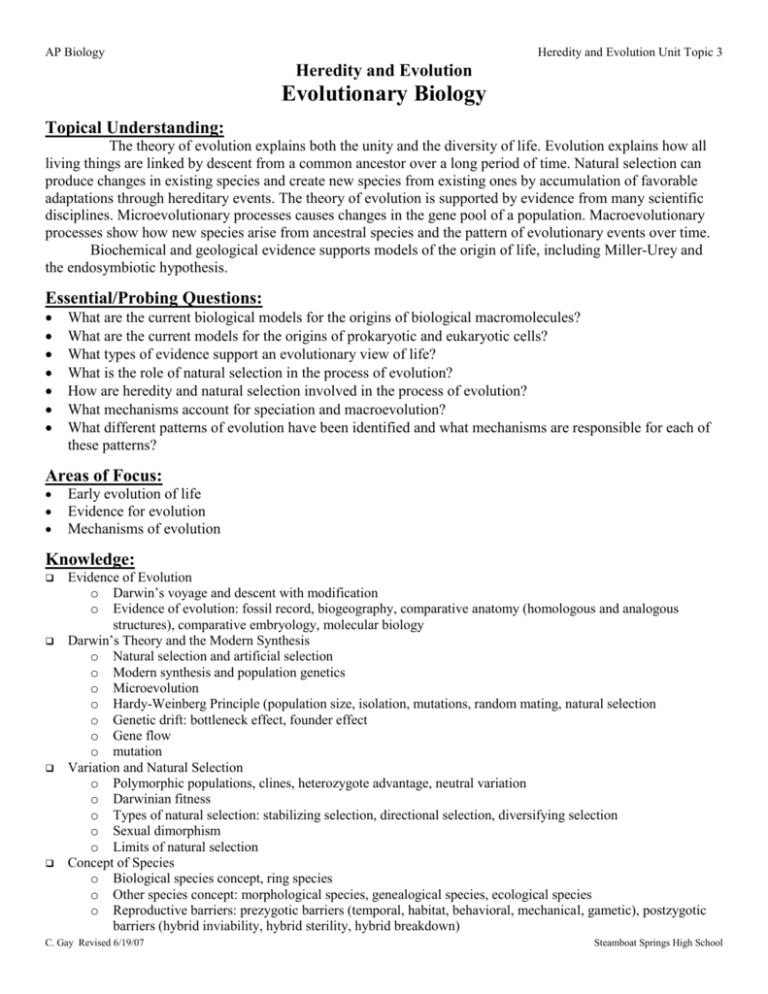
AP Biology Heredity and Evolution Unit Topic 3 Heredity and Evolution Evolutionary Biology Topical Understanding: The theory of evolution explains both the unity and the diversity of life. Evolution explains how all living things are linked by descent from a common ancestor over a long period of time. Natural selection can produce changes in existing species and create new species from existing ones by accumulation of favorable adaptations through hereditary events. The theory of evolution is supported by evidence from many scientific disciplines. Microevolutionary processes causes changes in the gene pool of a population. Macroevolutionary processes show how new species arise from ancestral species and the pattern of evolutionary events over time. Biochemical and geological evidence supports models of the origin of life, including Miller-Urey and the endosymbiotic hypothesis. Essential/Probing Questions: What are the current biological models for the origins of biological macromolecules? What are the current models for the origins of prokaryotic and eukaryotic cells? What types of evidence support an evolutionary view of life? What is the role of natural selection in the process of evolution? How are heredity and natural selection involved in the process of evolution? What mechanisms account for speciation and macroevolution? What different patterns of evolution have been identified and what mechanisms are responsible for each of these patterns? Areas of Focus: Early evolution of life Evidence for evolution Mechanisms of evolution Knowledge: Evidence of Evolution o Darwin’s voyage and descent with modification o Evidence of evolution: fossil record, biogeography, comparative anatomy (homologous and analogous structures), comparative embryology, molecular biology Darwin’s Theory and the Modern Synthesis o Natural selection and artificial selection o Modern synthesis and population genetics o Microevolution o Hardy-Weinberg Principle (population size, isolation, mutations, random mating, natural selection o Genetic drift: bottleneck effect, founder effect o Gene flow o mutation Variation and Natural Selection o Polymorphic populations, clines, heterozygote advantage, neutral variation o Darwinian fitness o Types of natural selection: stabilizing selection, directional selection, diversifying selection o Sexual dimorphism o Limits of natural selection Concept of Species o Biological species concept, ring species o Other species concept: morphological species, genealogical species, ecological species o Reproductive barriers: prezygotic barriers (temporal, habitat, behavioral, mechanical, gametic), postzygotic barriers (hybrid inviability, hybrid sterility, hybrid breakdown) C. Gay Revised 6/19/07 Steamboat Springs High School AP Biology Heredity and Evolution Unit Topic 3 Mechanisms of Speciation o Geographic isolation and allopatric speciation o Adaptive radiation o Sympatric speciation and polyploidy o Gradualism vs. punctuated equillibrium Earth History and Macroevolution o Macroevolution and the geologic time scale o Radiometric dating o Continental drift: Pangea, Laurasia, Gondwana, plate tectonics o Mass extinctions o Exaptation o Evo-Devo and paedomorphosis o Phylogenetic trees and cladistics Systematics and Phylogenetic Biology o Systematic classification o Convergent evolution: homology vs. analogy o Molecular comparisons: protein comparisons, DNA and RNA comparisons, molecular clocks o Cladistic analysis The Domains of Life o Three domain system Early Earth and the Origin of Life o Early Earth environment o Origins of life, Miller-Urey o Ribozymes and RNA world o Molecular cooperatives Skills: Hardy-Weinberg calculations Cladistic analysis C. Gay Revised 6/19/07 Steamboat Springs High School
